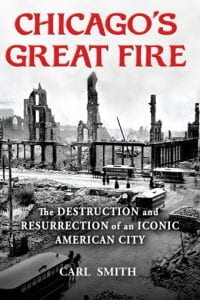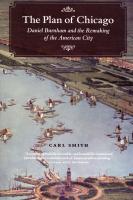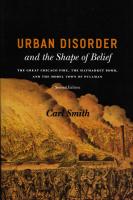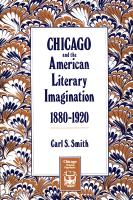
Chicago’s Great Fire
The Great Chicago Fire is the most well-known urban fire in the history of the United States and one of the nation’s most fabled disasters. It lasted thirty terrifying hours, from the evening of October 8 to the early morning of October 10, 1871, destroying a third of the city and leaving an equivalent portion of Chicagoans homeless. in its insatiable ferocity and preternatural vigor, the fire was a fitting counterpart to this astonishing new city, the embodiment of modernity in America. Chicago immediately set to work on rebuilding itself. Within two years a larger and stronger city had risen from the ashes of the old, and within two decades it was the second biggest metropolis in the nation. But both the fire and the recovery revealed and deepened divisions in this place that was as combustible socially and politically as it was physically. This book is the first full and documented narrative history of Chicago’s destruction and resurrection, enriched by dozens of illustrations from the time, as well as maps specially prepared to illuminate the remarkable story.
To order, go here or to your favorite bookseller.

City Water, City Life
This book contends that a city consists of more than a massing of citizens, a layout of buildings and streets, and an arrangement of political, economic, and social institutions. Through an analysis of a broad range of verbal and visual sources, it explains how the the discussion, design, and use of the first successful waterworks systems in leading cities reveal the ways in which Americans framed their conceptions of urban democracy and how they understood the natural and the built environment, individual health and the well-being of society, and the qualities of time and history in the rapidly urbanizing nation.

The Plan of Chicago: Daniel Burnham and the Remaking of the American City
Arguably the most influential document in the history of urban planning, Daniel Burnham’s 1909 Plan of Chicago, co-authored by Edward Bennett and produced in collaboration with the Commercial Club of Chicago, proposed many of the city’s most distinctive features. This history of the Plan’s origins, production, promotion, implementation, and heritage reveals its central role in shaping the ways people envision the cityscape and urban life itself.
Learn more about The Plan of Chicago

Urban Disorder and the Shape of Belief: The Great Chicago Fire, the Haymarket Bomb, and the Model Town of Pullman
This book explores the imaginative dimensions of three cataclysmic events that took place in what many considered the quintessential American city. It he traces the evolution of beliefs that increasingly linked city, disorder, and social reality in the minds of Americans. Encompassing a remarkable range of writings, illustrations, protests, public gatherings, trials, hearings, and urban reform efforts, it argues that these events collectively shaped how Americans saw, and continue to see, the city.
Learn more about Urban Disorder and the Shape of Belief

Chicago and the American Literary Imagination 1880-1920
This interdisciplinary study examines a broad variety of imaginative attempts to come to terms with turn-of-the-century Chicago. Among the themes explored is the place of art in the new industrial city. The book argues that writers seized upon major elements in Chicago-the omnipresent railroad, the large buildings, and the legendary stockyards-to develop a new aesthetic vocabulary that expressed what they believed was the meaning of modern urban life.
Link to full text of Chicago and the American Literary Imagination, 1880-1920
